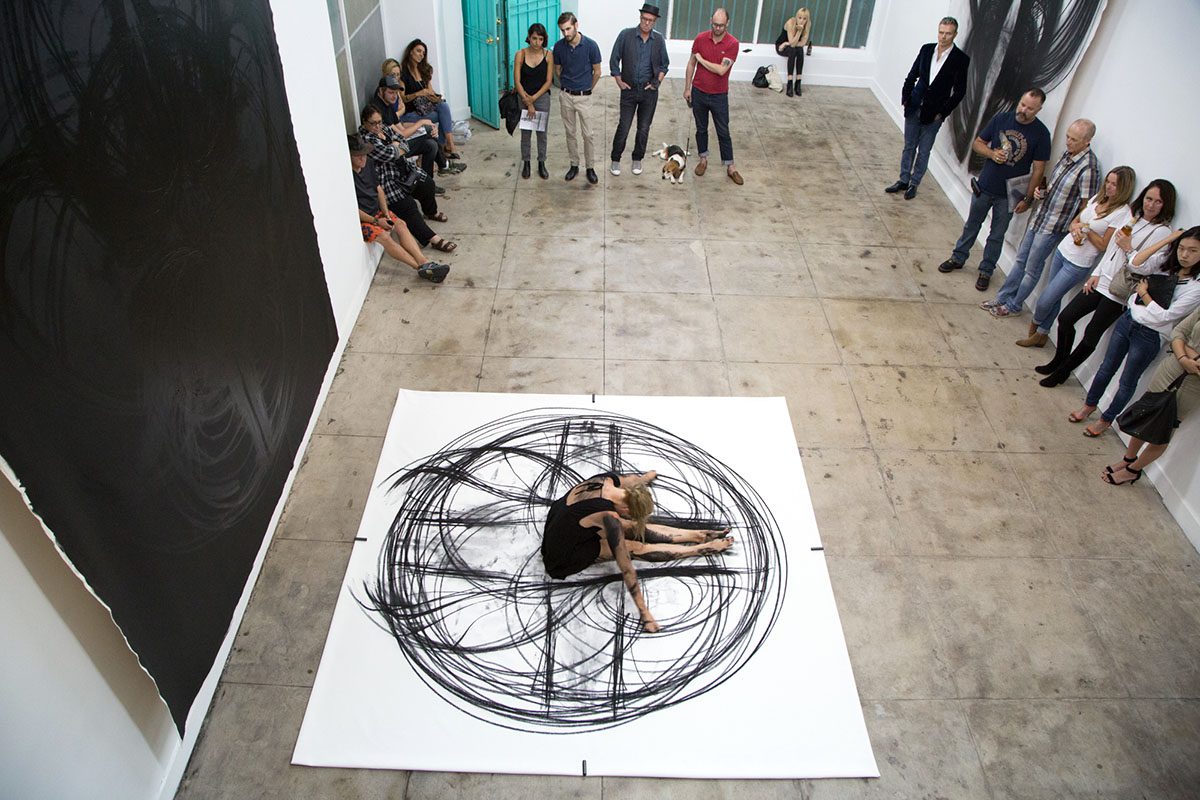The winter months are slowly ending, and the revitalizing spring is on its way. Change your students’ environment and get moving in the classroom! Shake off those winter blues with kinesthetic art practices. The Tate Museum in London defines kinesthetic artwork as using the “weight or movement of muscles, tendons, and joints of the body.” Discover how to channel student fidgets and dances into productive learning and artmaking.
Often, changing one element in the classroom for a student can make a big difference. For example, allow students to stand while creating art to prevent them from wiggling in their chairs. In addition, adding dance moves, stretching, and whole-body movements allows students to create art with their whole body, similar to sports.
Kinesthetic practices bring many other benefits to the art room, such as:
- Strengthens learning
- Improves memory
- Enhances student motivation and morale
- Provides time to explore and play
- Gets blood pumping and students active
- Allows a variety of skill levels to be successful
Let’s explore several activities and games to get students moving while making art and reinforcing art concepts.
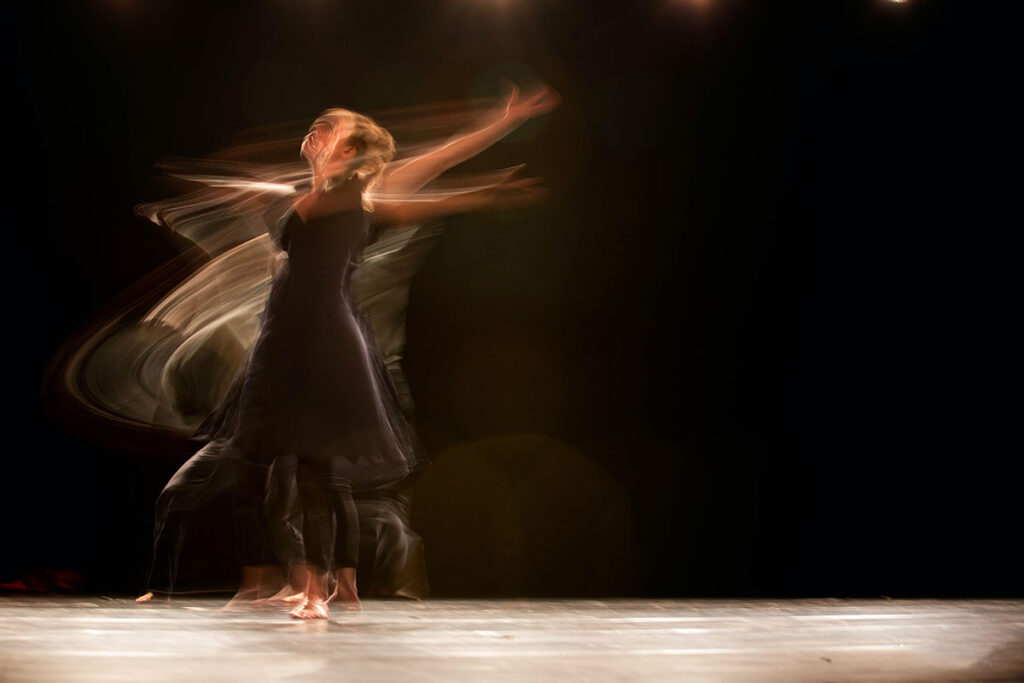
Bring kinesthetic art practices to your students with quick and fun activities to refocus attention and introduce or review knowledge.
1. Symmetrical Drawing
This activity is inspired by the artist Heather Hansen. Hansen incorporates drawing, dancing, and movement into charcoal drawings using her whole body. Cover a wall, table, or floor with large butcher paper. Students use charcoal to draw huge, symmetrical shapes with their arms. If you can take the class outside, use sidewalk chalk on the pavement.
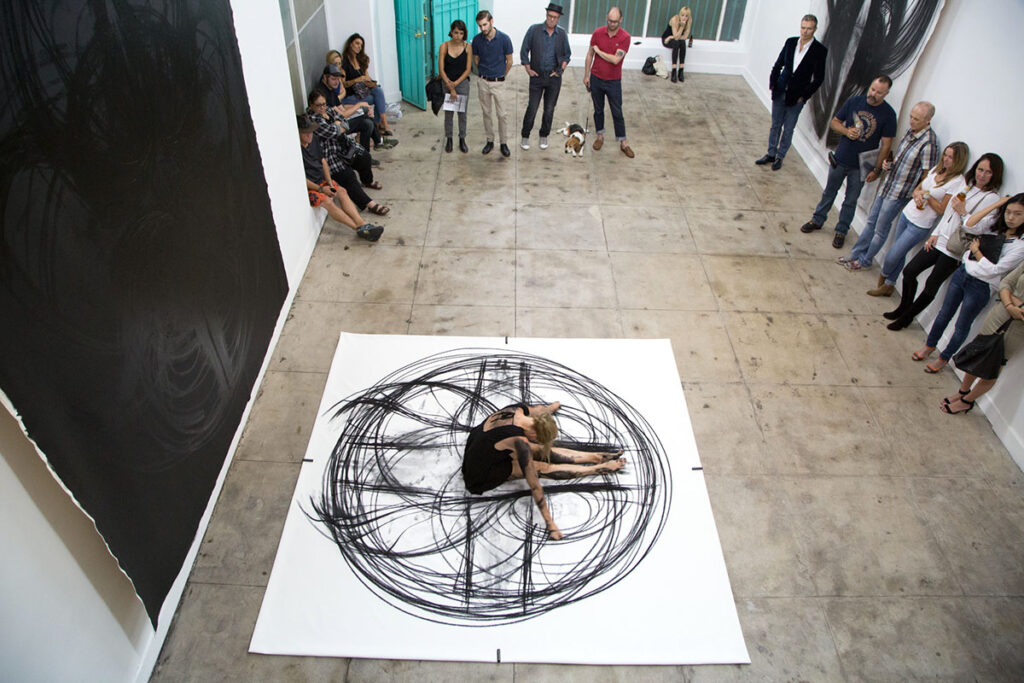
2. Strike a Pose
A student favorite when figure drawing is to have them do an action pose. Students brainstorm a list of fun and safe poses and action verbs. Popular poses include a flying superhero, a disco dance move, the Heisman football stance, or a yoga position.
3. Mirror Drawing
Place two students across from each other with drawing materials like a pencil and paper. One student slowly begins to draw an image. The other student replicates their moves as if looking in a mirror. This activity will challenge hand-eye coordination and attention.
4. Floor Paint
Get creative and alter how the art room is set up. Tape butcher paper on the floor and add watered-down paint to squeeze bottles. Show students the artist Jackson Pollock and discuss how he uses his body movements to make large-scale paintings. As students walk across the paper, they move their arms to make large, loose lines and shapes on the paper with the paint.
Make things more exciting by taking this activity outside! Dip old tennis balls in paint and slowly roll them across the paper. Wear disposable gloves and wrap plastic bags over shoes to help keep students clean!
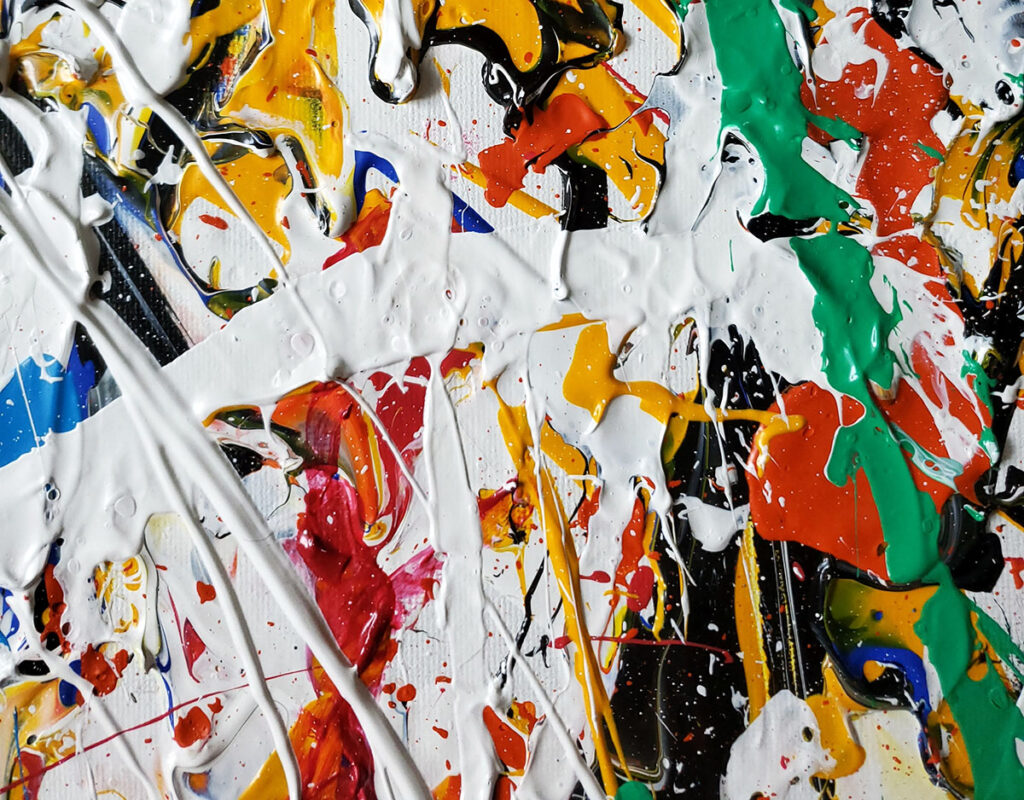
5. Light Photography
Turn the lights off, wave a flashlight or colorful glowstick, and take a photo. Find a great tutorial here. Use a smartphone or digital camera and a tripod. Make sure your photography device is able to take photos with a long exposure.
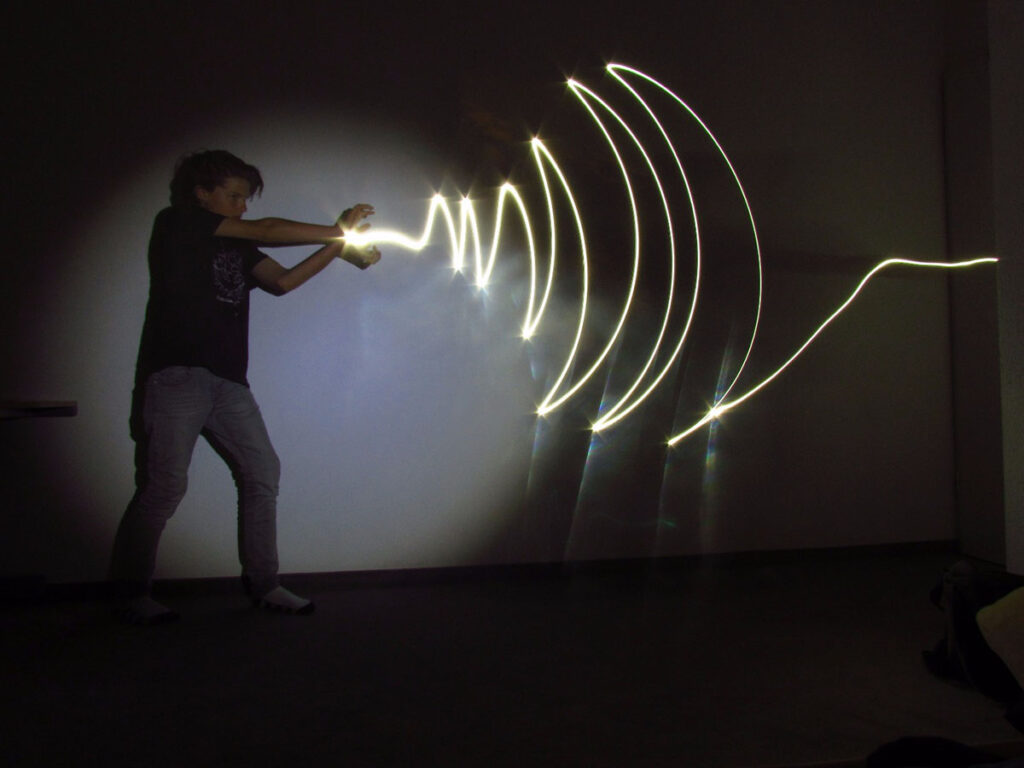
6. Pendulum Painting
Students can physically build a machine to create kinesthetic art! Science World has a great tutorial using common art room supplies such as chairs, yardsticks, scissors, tape, string, and paper. Use large paper to “catch” the paint patterns and thin the paint to prevent clogging.
7. Movement and Me
Are you looking for more resources? Visit the Movement and Me Collection in FLEX Curriculum. It has six lesson plans loaded with student-facing resources, videos, and assessments about movement. Students explore various ways to capture movement, like layering tissue paper to illustrate a flowing ocean.
Use these three games in the art room to encourage students to be active, collaborate with their peers, and increase motivation to learn.
Playing games can introduce or reinforce knowledge in a fun and memorable way. Students learn through play, and the camaraderie motivates students to take risks, cheerlead their peers, and accomplish tasks. Games are an excellent educational time-filler!
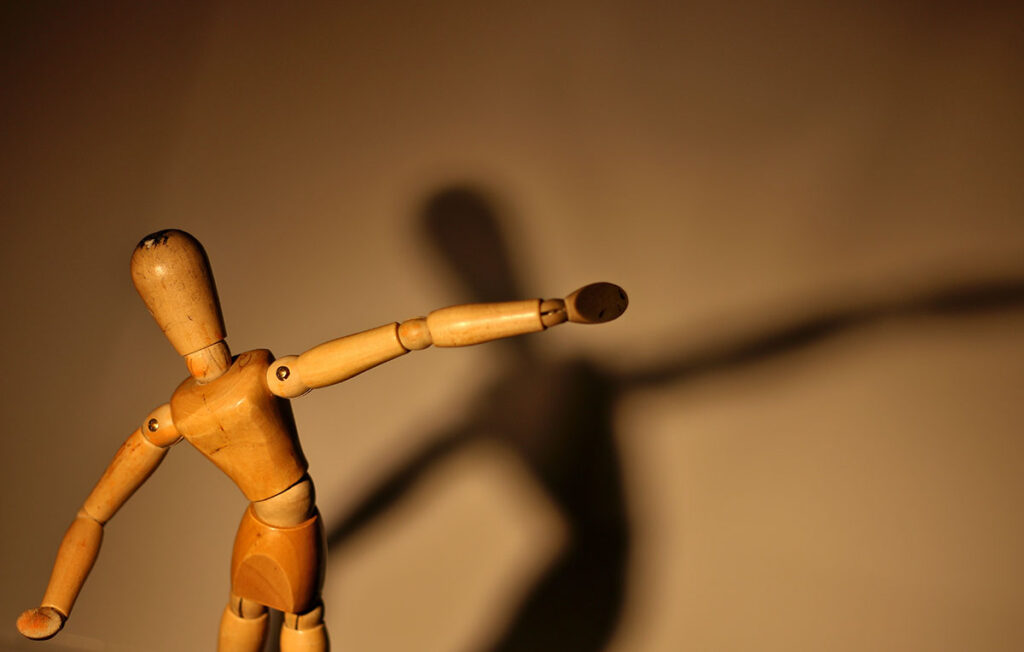
1. Ready, Set, Mimic!
Students pose like the subjects in famous two-dimensional artworks. Select artworks that everyone can mimic. Present them to the class one at a time. Be prepared to have some students just sit back and watch the rest of the class while other students go full-out with facial expressions!
2. Be a Statue
This game teaches students to wait patiently. It can also expose students to three-dimensional sculptures if you share famous artworks like Edgar Degas’ Little Dancer Aged Fourteen prior to playing. When the teacher says, “3, 2, 1 Statue!” students strike a pose and freeze like a statue. The student who makes the best statue wins the round!
3. Listen and Stand Up
This game challenges students to listen, comprehend, and get active! Gather a list of prompts, say, “Stand up if…” and insert a prompt. If the prompt applies to the student, they stand up. However, if the prompt does not apply to the student, they sit down. Additionally, if the student is in the middle or is undecided, they squat.
Consider how you can be as inclusive as possible when compiling your list of prompts and preparing for this game. For example, if you have a student in a wheelchair, have all students hold up one finger, two fingers, or three fingers instead of standing, sitting, or squatting. Below are a few inclusive prompts to get you started.
Stand up if…
- You love pineapple on pizza.
- You enjoy cooking.
- Your favorite color is a warm color.
- Your favorite color is a cool color.
- You rode the bus today.
- You have a pet.
Learning through movement and play is exciting! It takes concentration and whole-body focus. It also provides an opportunity to build relationships through peer encouragement and team building. Try making a light painting or a large-scale splatter painting—or be a painting! Partner up for a mirror drawing or go outside for a symmetrical chalk drawing. There are so many possibilities when you combine movement and art to reinforce concepts or compose new creations. Get students moving and thinking from their brains to their toes!
Share an activity or game you use to get your students up and moving.
How will you incorporate movement this week into a lesson?
Magazine articles and podcasts are opinions of professional education contributors and do not necessarily represent the position of the Art of Education University (AOEU) or its academic offerings. Contributors use terms in the way they are most often talked about in the scope of their educational experiences.
